Keratoconus is a disease resulting in a change of shape, thinning and mechanical instability of the cornea, and, ultimately, vision impairment.
In the initial stage of the disease, in order to improve visual acuity, the patient can use correction glasses, hard gas-permeable or scleral hybrid contact lenses, which does not, however, change the progressive nature of the disease.
In the advanced stage of the disease, it is necessary to perform a lamellar or penetrating corneal transplantation. An alternative treatment of early stages of keratoconus is corneal cross-linking or implantation of intrastromal corneal rings.
Collagen cross-linking with the use of riboflavin and UV radiation
The purpose of this method is to strengthen and stabilise the corneal shape in patients whose keratoconus is progressing or who no longer tolerate contact lenses.
Cross-links are transverse bonds between collagen fibrils of the cornea, which are responsible for maintaining integrity and stiffness of the cornea.
The procedure involves UV irradiation of the cornea, following the use of riboflavin in eye drops.
Possible treatment benefits:
FAQ
Keratoconus is a condition resulting in changing the shape of the cornea and its thinning. It is a progressive disease which may lead to impaired vision.
Collagen cross-linking with the use of riboflavin and UV radiation is a method of hardening and stabilising the corneal shape.
Yes, the procedure is performed under local anaesthesia, with the administration of anaesthetic drops.
Depending on the type of the procedure, surgery-related complaints usually discontinue within several days. Periodic blurred vision may persist for even 3-6 months, which is related to the strengthening of the cornea, and stabilisation of its shape.
The stabilisation of the corneal shape is usually maintained for several years after the procedure. In very advance cases, the cross-linking procedure may only delay the pathological process.
After about 5 years, the procedure may be repeated if keratoconus is progressing again.
Yes, the procedure is associated with a low risk of complications. The patient is informed about them during the qualification visit. In addition, they are presented in detail in the information brochure which the patient receives before the procedure.
You cannot drive a car directly after the procedure.
Doing sport is not recommended directly after the procedure. After healing of the cornea, the patient may return to all his/her previous activities.
The procedure may not be performed in pregnant women. It is recommended that the procedure be performed before planned pregnancy.
Before the visit qualifying for the procedure, the patient must remove hard contact lenses (if he/she uses them) for at least 14 days, soft lenses for 7 days. And on the day of the procedure, the patient should be without contact lenses, they can be removed a day earlier.
The procedures are carried out in an outpatient setting, under eye drop anaesthesia. The patient may go home after the procedure. The procedure involves UV irradiation of the cornea, following the use of riboflavin in eye drops. At the end of the procedure, a contact lens is inserted. For the first 3 days after the surgery, the patient may feel strong pain, stinging or burning sensation, and photophobia. This is related to the necessity of removing epithelium during the cross-linking procedure. After about 7 days, the patient may return to his/her work activities.

